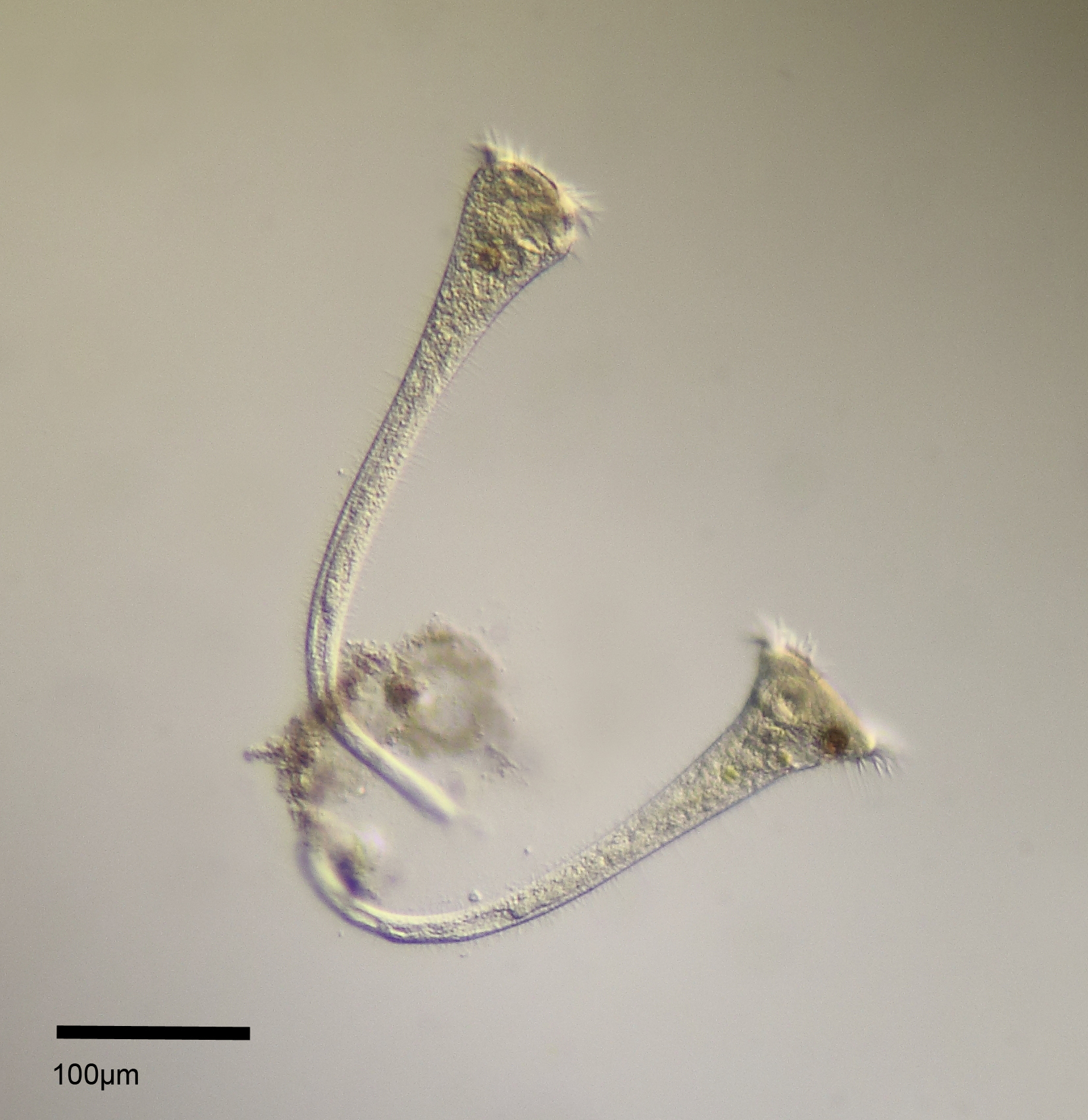

What do single-celled organisms think about? The answer, apparently, is quite a bit more than we give them credit for. Scientists usually frame cellular behavior as “programming”—innate and encoded responses to simple stimuli—rather than as a form of thinking or decision making. But a new study published in Current Biology might challenge that.
“Maybe it’s not that they’re programmed to do something,” says corresponding author and systems biologist Jeremy Gunawardena, “but rather that the program provides them with the machinery for actually making their own minds up.”
Of course, single-celled organisms don’t have “minds.” But Gunawardena and his colleagues seem to have demonstrated that some cells have a say in picking their response to certain stimulants. And it’s not a new concept—the first experiment to show cells reacting freely to their environment took place more than 100 years ago.
Researchers from Harvard Medical School, including Gunawardena, worked to recreate a 1906 study by Herbert Spencer Jennings, which found evidence that when the single-celled, trumpet-shaped organism Stentor roeseli was bothered by an irritant, it decided how to react. A cell avoiding irksome stimuli is easily explained away as a simple reflex, but Jennings claimed to watch different Stentor roeseli cells use different behaviors to accomplish their evasive maneuvers. That’s some complicated behavior to see in a seemingly uncomplicated organism.
Jennings’ original findings showed that little creatures exposed to carmine (a dye made up of crushed insects) reacted in a variety of different ways: bending, altering their ciliates, contracting into a little ball, or detaching. If Jennings exposed individual cells to the irritant several times in a row, they appeared to rethink their anti-carmine strategies—maybe at first bending away from the dye, then squishing up into a protective ball, and then swimming away as a last resort.

When other researchers failed to recreate the study in the sixties the scientific community dismissed Jennings’ results as invalid. All of the organisms in the follow-up study swam away at the first instance of an irritant instead of trying out a variety of mechanisms.
But when Gunawardena went back and looked at the study that supposedly disproved Jennings’ research, he found that they didn’t even use the right organism.
“I couldn’t believe Jennings’ work was trashed because of this shoddy piece of work someone had done,” Gunawardena told Popular Science.
From there, he says, Gunawardena “made a nuisance” of himself in his lab trying to get someone on board to recreate the experiment. Then he and his co-authors (who, luckily for Gunawardena, didn’t decide to curl up into a ball or run away as the result of his prodding) purchased S. roeseli found in a pond on a golf course in England and set out to see just how decisive the little critters really were.
The researchers set up and operated a contraption to videotape and pipette the carmine near the organisms to see what would happen. In Gunawardena’s experiment, the carmine didn’t cause the organisms to do anything at all. But when pelted with tiny plastic microbeads as an alternative source of irritation, the cells displayed the same avoidance mechanisms that Jennings first spotted.
The exact response depended on both the organism itself and the number of times it had been annoyed. Some cells went through all four reactions, while some jumped right to contracting and detaching the first time the beads came coming.
“What’s always been very interesting about this experiment is that it reveals that an individual cell is capable of much more elaborate behavior than we typically give them credit for,” Gunawardena says.
Micheal Travisano, a professor of ecology and evolution at the University of Minnesota who was not involved in the study, says we usually only look for this kind of behavior in more complicated creatures, be they multicellular fungal organisms or apes.
“It challenges our assumptions of what’s necessary to have the kind of complex behaviors that are mostly studied in behavioral ecology,” Travisano says. “In this study, they are studying a ciliate—not even a [a colony of ciliates]—that has some of the behaviors that we associate with much more complex organisms.”
On top of the fact that these cells seemingly decide to take action when irritated instead of merely twitching away, Gunawardena found that it was there was an almost exactly 50/50 chance that when bothered, the cell would either “choose” to contract or “choose” to swim away—almost like flipping a coin. His next steps are to figure out why.
Thinking of individual cells as having some amount of autonomy could allow a new perspective on how disease develops, Gunawardena says. “We might want to bring to our way of thinking about cells a more ecological and cognitive perspective.”
